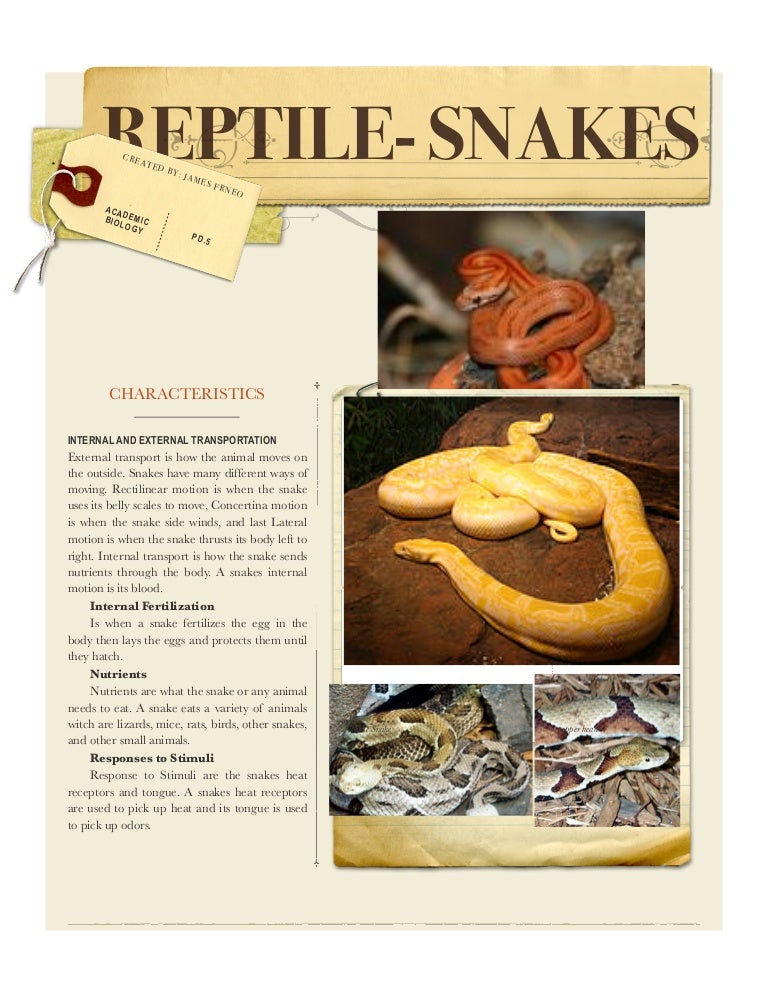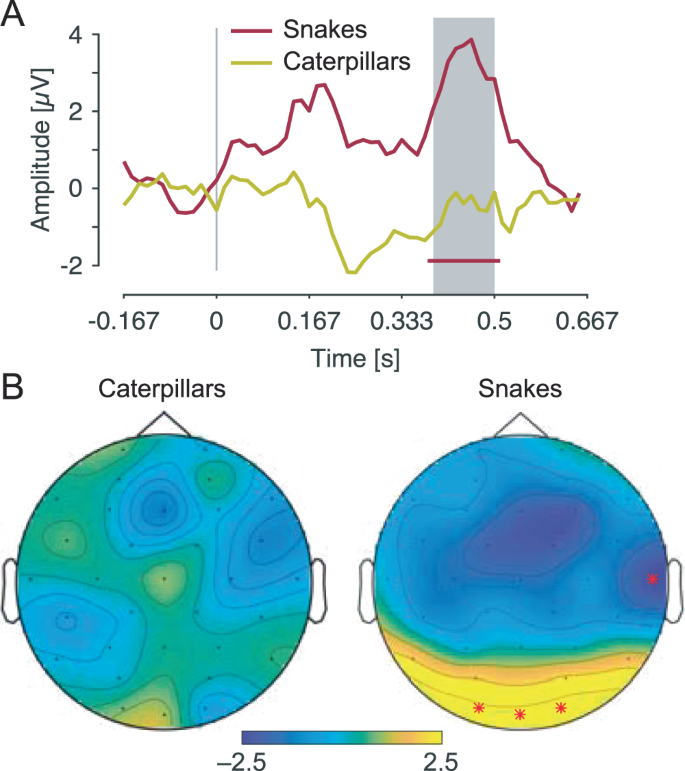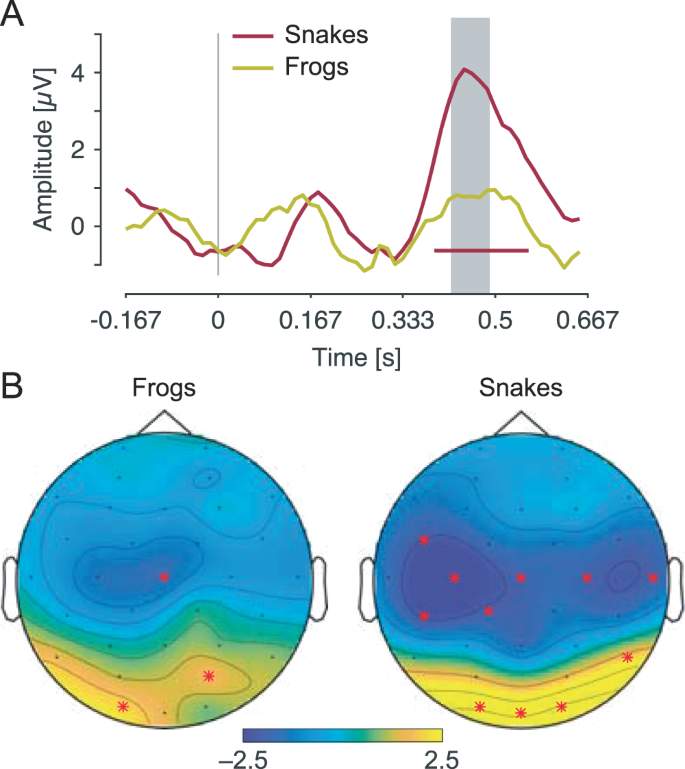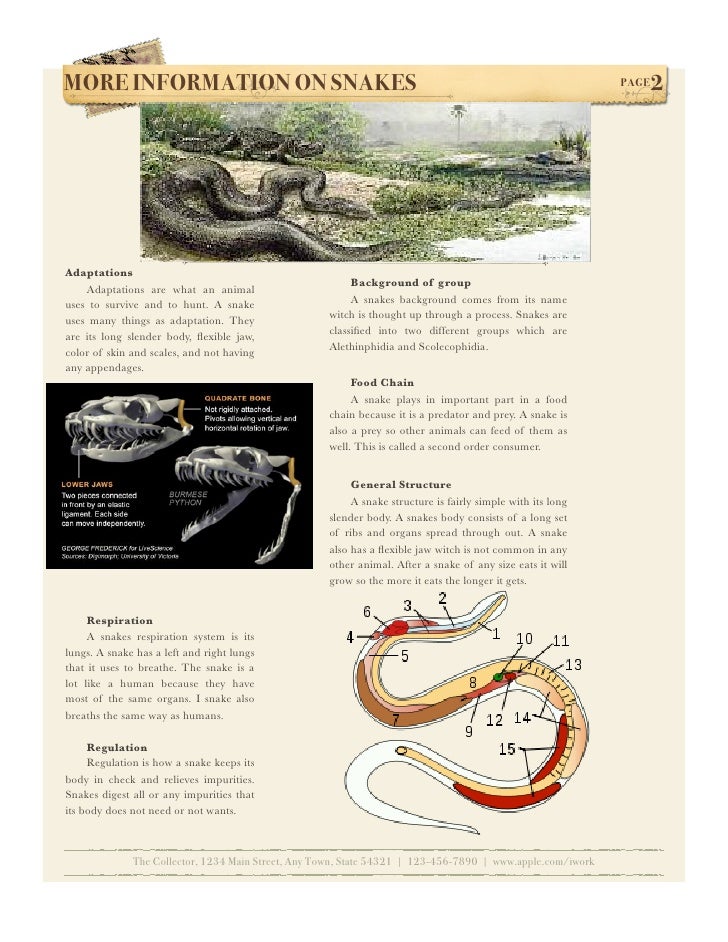Snake response to stimuli
Home » » Snake response to stimuliYour Snake response to stimuli images are available. Snake response to stimuli are a topic that is being searched for and liked by netizens today. You can Find and Download the Snake response to stimuli files here. Find and Download all free photos.
If you’re searching for snake response to stimuli pictures information related to the snake response to stimuli keyword, you have visit the ideal site. Our website frequently gives you hints for seeking the highest quality video and picture content, please kindly hunt and locate more enlightening video articles and graphics that match your interests.
Snake Response To Stimuli. It could be argued that cooler snakes are more motivated to respond to novel stimuli. This supports the notion that the aversion that is induced by trypophobic stimuli reflects ancestral threat and. Support for the idea of a high visual sensitivity to snakes has been proven in primate neural activity in response to snake threats. Additionally touch is important for snakes socially and is a primary means of communication between snakes of the same species.
 Conditioning In The Little Albert Experiment The Neutral Stimulus Of A Rat Is Paired With The Unconditioned Stim Behavior Modification Experiments Psychology From pinterest.com
Conditioning In The Little Albert Experiment The Neutral Stimulus Of A Rat Is Paired With The Unconditioned Stim Behavior Modification Experiments Psychology From pinterest.com
Cooler snakes respond more strongly to infrared stimuli but we have no idea why. Non-invasive electroencephalogram EEG studies have found an enhanced visual brain activity in response to images of snakes in humans. It is a term that refers to an organisms ability to respond to the outside environment. Tactile stimuli that evoked the greatest responses were those that made contact at the lateral head and lateral body rather than dorsal head body and tail. The large and consistent EPN enhancement in response to snake pictures reflects high early capture of human visual attention by snakes and clearly supports Isbells SDT 19 20. ABSTRACT The pit organ defining pit vipers Crotalinae contains a membrane covered with temperature receptors that detect thermal radiation from environmental.
Results suggest that snakes capture infants attention.
We presented each snake with a moving pendulum bob regulated at a series of six temperatures against a uniform background regulated at one of three temperatures. As in the first study although the general response pattern for snake pictures was reminiscent of the typical pattern induced by visual stimulation in infants only the time-window at around 380. Support for the idea of a high visual sensitivity to snakes has been proven in primate neural activity in response to snake threats. According to the SDT snakes have acted during evolution as a selective pressure in the modification and expansion of the primate visual system resulting in greater visual sensitivity to snakes than to other stimuli. Tactile stimuli that evoked the greatest responses were those that made contact at the lateral head and lateral body rather than dorsal head body and tail. We presented each snake with a moving pendulum bob regulated at a series of six temperatures against a uniform background regulated at one of three temperatures.
 Source: pinterest.com
Source: pinterest.com
Cooler snakes respond more strongly to infrared stimuli but we have no idea why. Thus snakes may automatically capture atten-tion. How do animal. For example because a cold snake moves more slowly it is more vulnerable to predation and so may be more motivated to fully identify the source of a thermal signal thereby resulting in an increased rate of tongue flicking at low T b. SNAKE STIMULI People who encounter snakes in the wild may report that they first froze in fear only a split second later realizing that they were about to step on a snake.
 Source: ibbiologyhelp.com
Source: ibbiologyhelp.com
A study supporting this hy-pothesis Öhman Flykt Esteves 2001 demonstrated shorter detec-tion latencies for a. It is a term that refers to an organisms ability to respond to the outside environment. Response to stimuli refers to a response to outside stimuli such as a noise or a smell. ABSTRACT The pit organ defining pit vipers Crotalinae contains a membrane covered with temperature receptors that detect thermal radiation from environmental. Snakes have various responses to stimuli such as their ability to slither and use their heat receptors jaws and tongues.
 Source: researchgate.net
Source: researchgate.net
It is a term that refers to an organisms ability to respond to the outside environment. SNAKE STIMULI People who encounter snakes in the wild may report that they first froze in fear only a split second later realizing that they were about to step on a snake. Additionally touch is important for snakes socially and is a primary means of communication between snakes of the same species. Our examination of what location on the snakes body is most sensitive to stimuli and how they react to those stimuli can provide insight into the types of predation strategies that are most threatening to the snakes. When something moves near a snake it feels vibrations in the ground.
 Source: slideshare.net
Source: slideshare.net
When something moves near a snake it feels vibrations in the ground. According to the SDT snakes have acted during evolution as a selective pressure in the modification and expansion of the primate visual system resulting in greater visual sensitivity to snakes than to other stimuli. This supports the notion that the aversion that is induced by trypophobic stimuli reflects ancestral threat and. Some also use their venom. Response to stimuli refers to a response to outside stimuli such as a noise or a smell.
 Source: nature.com
Source: nature.com
Non-invasive electroencephalogram EEG studies have found an enhanced visual brain activity in response to images of snakes in humans. ABSTRACT The pit organ defining pit vipers Crotalinae contains a membrane covered with temperature receptors that detect thermal radiation from environmental. The large and consistent EPN enhancement in response to snake pictures reflects high early capture of human visual attention by snakes and clearly supports Isbells SDT 19 20. The outcome for the EPN indicates that snakes and to a somewhat lesser extent trypophobic stimuli and poisonous animals trigger early automatic visual attention. Snake body temperatures varied from 18.
 Source: pinterest.com
Source: pinterest.com
Support for the idea of a high visual sensitivity to snakes has been proven in primate neural activity in response to snake threats. How do animal. Response to stimuli refers to a response to outside stimuli such as a noise or a smell. The outcome for the EPN indicates that snakes and to a somewhat lesser extent trypophobic stimuli and poisonous animals trigger early automatic visual attention. ABSTRACT The pit organ defining pit vipers Crotalinae contains a membrane covered with temperature receptors that detect thermal radiation from environmental.
 Source: pinterest.com
Source: pinterest.com
See full answer below. Cooler snakes respond more strongly to infrared stimuli but we have no idea why. Snakes have various responses to stimuli such as their ability to slither and use their heat receptors jaws and tongues. See full answer below. Support for the idea of a high visual sensitivity to snakes has been proven in primate neural activity in response to snake threats.
 Source: nature.com
Source: nature.com
For example because a cold snake moves more slowly it is more vulnerable to predation and so may be more motivated to fully identify the source of a thermal signal thereby resulting in an increased rate of tongue flicking at low T b. Response to stimuli refers to a response to outside stimuli such as a noise or a smell. Our examination of what location on the snakes body is most sensitive to stimuli and how they react to those stimuli can provide insight into the types of predation strategies that are most threatening to the snakes. Cooler snakes respond more strongly to infrared stimuli but we have no idea why. We presented each snake with a moving pendulum bob regulated at a series of six temperatures against a uniform background regulated at one of three temperatures.
 Source: pinterest.com
Source: pinterest.com
How do animal. Infants showed the fastest startle responses and lowest average heart rate to the snakes especially when paired with a. Brain imaging investigations have found further evidence for the theory. The outcome for the EPN indicates that snakes and to a somewhat lesser extent trypophobic stimuli and poisonous animals trigger early automatic visual attention. See full answer below.
 Source: researchgate.net
Source: researchgate.net
Support for the idea of a high visual sensitivity to snakes has been proven in primate neural activity in response to snake threats. Results suggest that snakes capture infants attention. We presented each snake with a moving pendulum bob regulated at a series of six temperatures against a uniform background regulated at one of three temperatures. Brain imaging investigations have found further evidence for the theory. ABSTRACT The pit organ defining pit vipers Crotalinae contains a membrane covered with temperature receptors that detect thermal radiation from environmental.

Thus snakes may automatically capture atten-tion. Thanks to their sense of touch they can respond immediately to stimuli from their environment and they can feel the slightest changes in their habitat. ABSTRACT The pit organ defining pit vipers Crotalinae contains a membrane covered with temperature receptors that detect thermal radiation from environmental. See full answer below. According to the SDT snakes have acted during evolution as a selective pressure in the modification and expansion of the primate visual system resulting in greater visual sensitivity to snakes than to other stimuli.
 Source: pinterest.com
Source: pinterest.com
According to the SDT snakes have acted during evolution as a selective pressure in the modification and expansion of the primate visual system resulting in greater visual sensitivity to snakes than to other stimuli. According to the SDT snakes have acted during evolution as a selective pressure in the modification and expansion of the primate visual system resulting in greater visual sensitivity to snakes than to other stimuli. When something moves near a snake it feels vibrations in the ground. Clearly the pattern of response to stimuli arising from prey varies among snake taxaTongue flicking in snakes is a stimulus-seeking behavior and is the main process for delivering volatile and non-volatile cues to the vomeronasal organs Halpern 1992Cooper 1994 which mediates definitive analysis of chemical information Cowles and Phelan 1958Halpern 1992. A study supporting this hy-pothesis Öhman Flykt Esteves 2001 demonstrated shorter detec-tion latencies for a.
 Source: pinterest.com
Source: pinterest.com
The outcome for the EPN indicates that snakes and to a somewhat lesser extent trypophobic stimuli and poisonous animals trigger early automatic visual attention. It could be argued that cooler snakes are more motivated to respond to novel stimuli. The outcome for the EPN indicates that snakes and to a somewhat lesser extent trypophobic stimuli and poisonous animals trigger early automatic visual attention. Cooler snakes respond more strongly to infrared stimuli but we have no idea why. When something moves near a snake it feels vibrations in the ground.
 Source: researchgate.net
Source: researchgate.net
It could be argued that cooler snakes are more motivated to respond to novel stimuli. Infants showed the fastest startle responses and lowest average heart rate to the snakes especially when paired with a. A study supporting this hy-pothesis Öhman Flykt Esteves 2001 demonstrated shorter detec-tion latencies for a. The outcome for the EPN indicates that snakes and to a somewhat lesser extent trypophobic stimuli and poisonous animals trigger early automatic visual attention. Cooler snakes respond more strongly to infrared stimuli but we have no idea why.
 Source: pinterest.com
Source: pinterest.com
For example because a cold snake moves more slowly it is more vulnerable to predation and so may be more motivated to fully identify the source of a thermal signal thereby resulting in an increased rate of tongue flicking at low T b. We measured physiological responses to the pairs of stimuli including startle magnitude latency to startle and heart rate. For example because a cold snake moves more slowly it is more vulnerable to predation and so may be more motivated to fully identify the source of a thermal signal thereby resulting in an increased rate of tongue flicking at low T b. Results suggest that snakes capture infants attention. According to the SDT snakes have acted during evolution as a selective pressure in the modification and expansion of the primate visual system resulting in greater visual sensitivity to snakes than to other stimuli.
 Source: pinterest.com
Source: pinterest.com
Response to stimuli refers to a response to outside stimuli such as a noise or a smell. Brain imaging investigations have found further evidence for the theory. It could be argued that cooler snakes are more motivated to respond to novel stimuli. Support for the idea of a high visual sensitivity to snakes has been proven in primate neural activity in response to snake threats. Response to stimuli refers to a response to outside stimuli such as a noise or a smell.
 Source: pinterest.com
Source: pinterest.com
This supports the notion that the aversion that is induced by trypophobic stimuli reflects ancestral threat and. This supports the notion that the aversion that is induced by trypophobic stimuli reflects ancestral threat and. Some also use their venom. Response to stimuli refers to a response to outside stimuli such as a noise or a smell. A study supporting this hy-pothesis Öhman Flykt Esteves 2001 demonstrated shorter detec-tion latencies for a.
 Source: slideshare.net
Source: slideshare.net
Cooler snakes respond more strongly to infrared stimuli but we have no idea why. Thanks to their sense of touch they can respond immediately to stimuli from their environment and they can feel the slightest changes in their habitat. Support for the idea of a high visual sensitivity to snakes has been proven in primate neural activity in response to snake threats. As in the first study although the general response pattern for snake pictures was reminiscent of the typical pattern induced by visual stimulation in infants only the time-window at around 380. ABSTRACT The pit organ defining pit vipers Crotalinae contains a membrane covered with temperature receptors that detect thermal radiation from environmental.
This site is an open community for users to submit their favorite wallpapers on the internet, all images or pictures in this website are for personal wallpaper use only, it is stricly prohibited to use this wallpaper for commercial purposes, if you are the author and find this image is shared without your permission, please kindly raise a DMCA report to Us.
If you find this site adventageous, please support us by sharing this posts to your preference social media accounts like Facebook, Instagram and so on or you can also bookmark this blog page with the title snake response to stimuli by using Ctrl + D for devices a laptop with a Windows operating system or Command + D for laptops with an Apple operating system. If you use a smartphone, you can also use the drawer menu of the browser you are using. Whether it’s a Windows, Mac, iOS or Android operating system, you will still be able to bookmark this website.